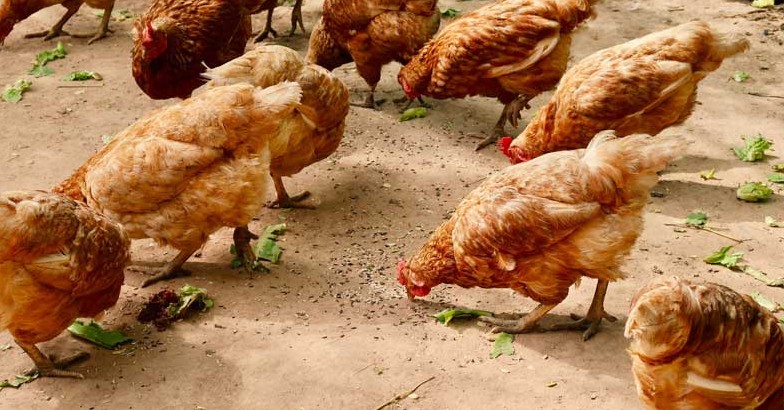Free-range chicken is now a common term often used by many to define the supposed quality of a “country” chicken or, better still, a “farmer’s” chicken.
Free-range derives from the Latin “ruspari”: to search. Ruspare means to scratch around on the ground looking for food, and this is not only done by chickens wandering around the meadow looking for worms, but also by humans raking and gleaning wheat, olives, fallen chestnuts…
Ruspante was used to describe “chicken raised according to the traditional rustic system, born from eggs hatched by a hen, raised free in the fields and fed on corn, bran, and oats.”
‘Country chicken’ was the name given to it in the past, also to distinguish it from chickens raised on large organized farms, in relation to which it was intended to represent the idealized supremacy, in terms of taste, of free-range, i.e., rustic, chickens.
Everything that is free-range can also be defined as rustic: cheese, bread, houses, people… everything that does not undergo any particular attention in terms of its form or growth, implicitly considering this practice as ‘natural’ and therefore free from interventions that alter its ‘raw’ substance.
However, the term ruspante has remained linked above all to the image of chicken, unduly handed down as an emblem of authenticity that has very little to do with reality and rationality if analyzed according to the health knowledge acquired over time by farmers.
Today, the term free-range is by no means obsolete and is still used, perhaps with a touch of nostalgia, but more likely calculated on a psychological level, to evoke the farms of yesteryear.
But technically, it is only a response to so-called ‘market demand’ stimulated by organic, animal rights and environmental initiatives that irrationally tend to impose emotional and evocative choices that are scientifically backward.
Currently, therefore, animals that are raised according to standards that attempt to recover idealized conditions are defined as “free-range.” These standards require that animals have access to the outdoors for at least part of the day, regardless of whether the chickens choose to go outside or not. This takes into account the nature of chickens, which makes them wary of open spaces due to their atavistic fear of being preyed upon by birds of prey and other animals.
Moreover, there are no precisely determinable and rational requirements that can be agreed upon with the animals, either for the amount of time the chickens must spend outdoors, the size of the outdoor area, or the type of soil on which they can “scratch.” However, a small percentage of farmers are responding to this evocation of the past by the “market” by providing what it demands.
But even free-range chickens are kept in covered farms that do not prevent them from scratching and facilitate their social life and access to healthy food and clean water.
Apart from the availability of outdoor space (which chickens are reluctant to access), there are no obvious differences between free-range chickens and ‘other’ chickens. All of them, without distinction, prefer to stay close to water and feed, which are usually found inside the farm, and ultimately spontaneously prefer the farms’ ability to maintain optimal temperatures and an environment suited to their age.
It should also be noted that not all chickens can be defined as organic simply because they are free-range, while all organic chickens are free-range… like the others.
It is therefore more a matter of definitions that pander to the aforementioned irrational demands of a section of the population. But in reality, all chickens on modern farms, free-range or not, are healthy.
The most obvious differences may be their size and higher cost, both for the farmer and, of course, for the consumer.
Sorry for the rustic nature of the topic.











